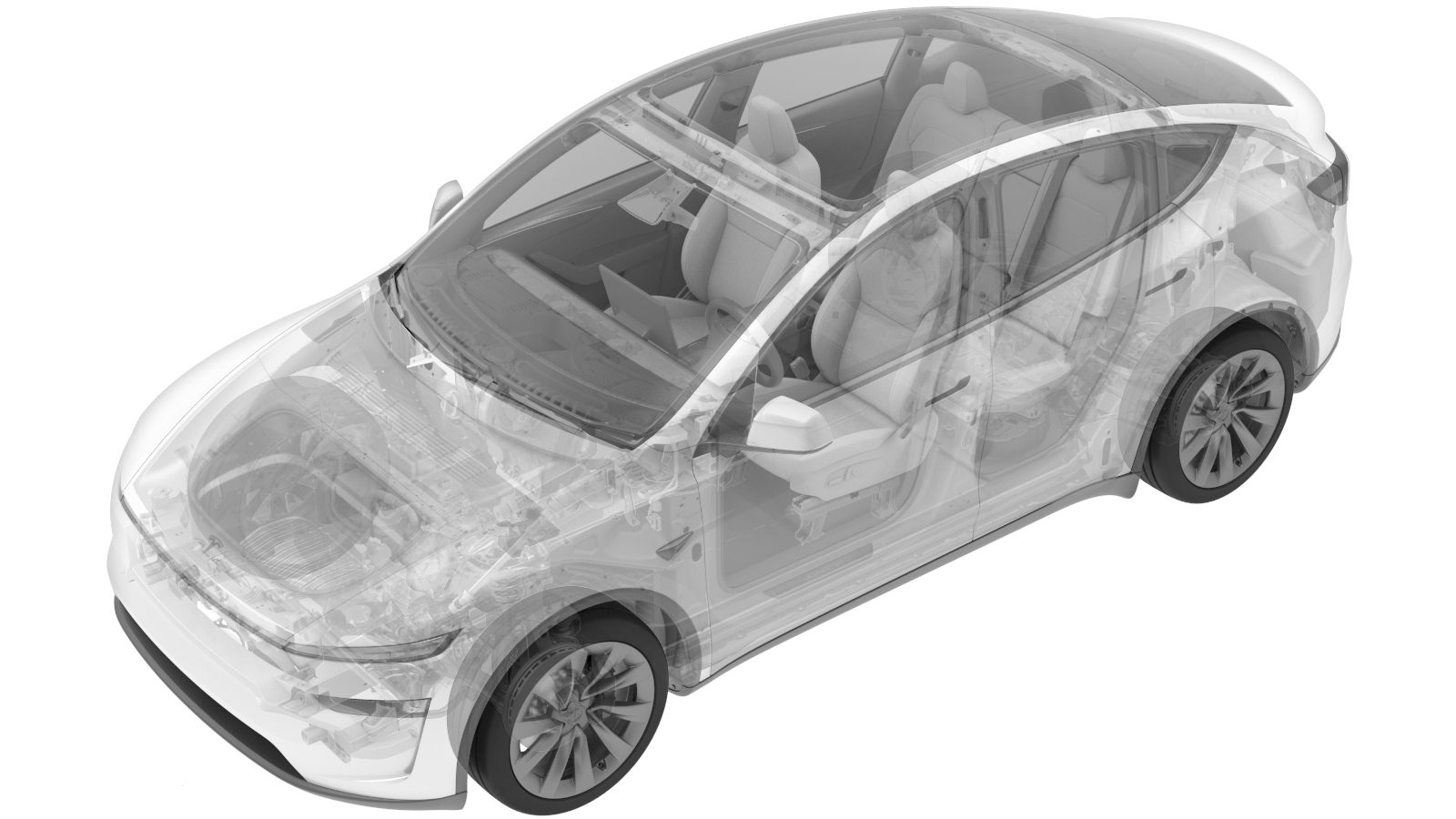Charge Port Door - NA Charging Standard (NACS) (Remove and Replace)
 Correction code44010105020.66
NOTE: Unless otherwise explicitly stated in the procedure, the above correction code and FRT reflect all of the work required to perform this procedure, including the linked procedures. Do not stack correction codes unless explicitly told to do so.
NOTE: See Flat Rate Times to learn more about FRTs and how they are created. To provide feedback on FRT values, email ServiceManualFeedback@tesla.com.
NOTE: See Personal Protection to make sure wearing proper PPE when performing the below procedure.
NOTE: See Ergonomic Precautions for safe and healthy working practices.
Correction code44010105020.66
NOTE: Unless otherwise explicitly stated in the procedure, the above correction code and FRT reflect all of the work required to perform this procedure, including the linked procedures. Do not stack correction codes unless explicitly told to do so.
NOTE: See Flat Rate Times to learn more about FRTs and how they are created. To provide feedback on FRT values, email ServiceManualFeedback@tesla.com.
NOTE: See Personal Protection to make sure wearing proper PPE when performing the below procedure.
NOTE: See Ergonomic Precautions for safe and healthy working practices.
- 2025-06-04: Added instruction to zero adjust the Hioki resistance meter prior to measurement.
- 1076921-00-A Insulation Multimeter, Fluke 1587 (EMEA)
- 1130480-00-A Test Probes, Slim, Fluke TP38
Only
technicians who have completed all required certification courses are permitted to
perform this procedure. Tesla recommends third party service provider technicians
undergo equivalent training before performing this procedure. For more information on
Tesla Technician requirements, or descriptions of the subject matter for third parties,
see HV Certification Requirements. Proper personal protective equipment (PPE) and insulating HV
gloves with a minimum rating of class 0 (1000V) must
be worn at all times a high voltage cable, busbar, or fitting is handled. Refer to Tech Note TN-15-92-003, High Voltage Awareness
Care Points
for additional safety
information.
Remove all jewelry (watches, bracelets, rings, necklaces, earrings, ID tags, piercings, etc.) from your person, and all objects (keys, coins, pens, pencils, tools, fasteners, etc.) from your pockets before performing any procedure that exposes you to high voltage.
Proper Personal Protective Equipment (PPE) is required to perform this procedure:
- High Voltage (HV) insulating gloves
- Leather glove protectors
- High voltage glove tester
- Safety glasses
- Electrical hazard rated safety shoes
A glove inflator is the only recommended way to test HV gloves. Both HV gloves must pass testing before beginning this procedure. If either glove does not pass the air check, discard the pair.
- North America: HV gloves can be used up to 12 months after the testing date printed on the glove, but only 6 months after first use even if the gloves are still within the 12 month period. If the gloves were not put into service during the 12-month period following the testing date, they must be retested before being put into service.
- Europe: Class 0 (1000V) HV gloves have no expiration date and may be used if they pass the pre-use assessment and the periodic inspection.
- Asia Pacific: Follow the
expiration date stated by the HV glove manufacturer, and:
- o China only: Test the gloves every 6 months according to GB/T 17622.
Torque Specifications
| Description | Torque Value | Recommended Tools | Reuse/Replace | Notes |
|---|---|---|---|---|
| Bolts (X3) that attach charge port assembly to vehicle |
 9 Nm (6.6 lbs-ft) |
|
Reuse | |
| Nuts (X2) secure charge port busbar leads to charge port assembly |
 9 Nm (6.6 lbs-ft) |
|
Reuse | Nuts have captured washers, if excessive force is required to seat busbars, they may have been bent. Inspect for damage and replace if necessary. |
Remove
- Remove the charge port controller. See Controller - Charge Port - GEN 4 (NACS) (Remove and Replace).
-
Remove charge port safety cap.
-
Remove fasteners securing charge port busbar to charge port, and remove
busbar leads from studs.
TIpUse of the following tool(s) is recommended:
- Insulated
tools:
- 10 mm deep socket
- Cordless Ratchet/Impact Driver
- TQRQUE WRENCH, 1/4" DR, INSULATED, 2-10NM. TPN 1785247-00-A
- Electrical Protective Gloves
- Insulated
tools:
-
Release LH body harness from rear body and move aside.
-
Remove charge port
assembly.
TIpUse of the following tool(s) is recommended:
- Insulated
tools:
- 10 mm deep socket
- Cordless Ratchet/Impact Driver
- Insulated
tools:
-
Remove charge port door.
Install
-
If reinstalling the same charge port, clean the charge port busbar HV header at the back of the charge port assembly with an IPA wipe, and then air dry for 1 minute.
NoteSkip this step if installing a new charge port assembly, as the new charge port has pre-applied electrical joint compound.TIpUse a plastic trim tool to push the IPA wipe into the crevices of the charge port busbar HV header.
-
Remove charge port door.
-
Install charge port assembly.
 9 Nm (6.6 lbs-ft)TIpUse of the following tool(s) is recommended:
9 Nm (6.6 lbs-ft)TIpUse of the following tool(s) is recommended:- Insulated
tools:
- 10 mm deep socket
- Cordless Ratchet/Impact Driver
- Insulated
tools:
-
Install LH body harness onto rear body.
- Apply Penetrox to backside of busbar leads.
-
Install charge port busbar leads to charge port assembly.
 9 Nm (6.6 lbs-ft)TIpUse of the following tool(s) is recommended:
9 Nm (6.6 lbs-ft)TIpUse of the following tool(s) is recommended:- Insulated
tools:
- 10 mm deep socket
- Cordless Ratchet/Impact Driver
- TQRQUE WRENCH, 1/4" DR, INSULATED, 2-10NM. TPN 1785247-00-A
- Electrical Protective Gloves
- Insulated
tools:
- Perform a zero adjust of the Hioki resistance meter. See Resistance Meter (Zero Adjust).
- Put on HV insulating gloves and leather over gloves.
-
At the charge port, use the Hioki resistance meter to measure the
resistance between the charge port busbar lead and the charge port busbar
stud. Also perform this test on the other lead and stud.
NoteThe acceptable resistance is between 0.050 mΩ (50 μΩ) and 0.270 mΩ (270 μΩ). If the measured resistance is above 270 mΩ (270 μΩ), escalate a Toolbox session, as appropriate.NoteIf the resistance is lower than 0.050 mΩ (50 μΩ), reposition the probes and measure again. If after 4 attempts the resistance is consistently lower than 0.050 mΩ (50 μΩ), the test has passed; continue to the next step.
-
Install charge port safety cap.
- Install the charge port controller. See Controller - Charge Port - GEN 4 (NACS) (Remove and Replace).